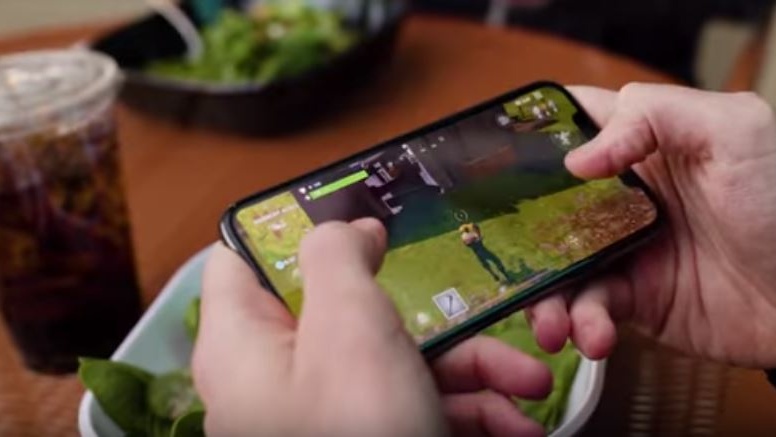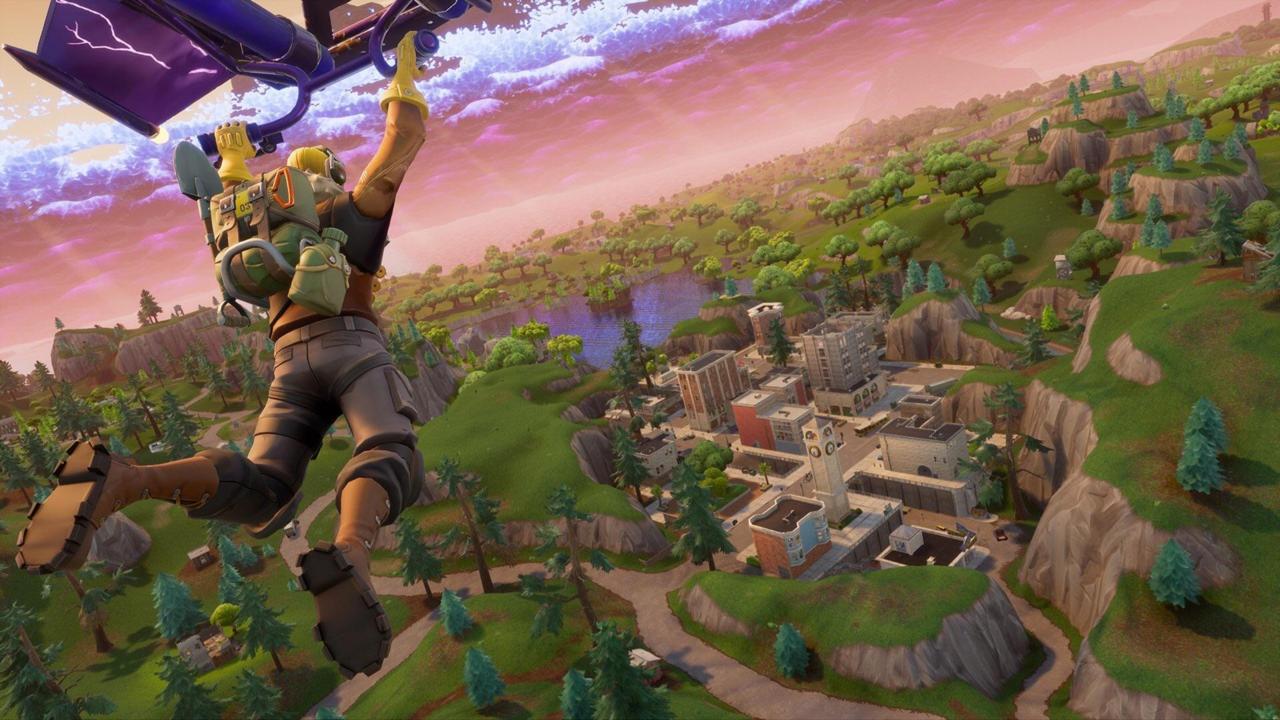5 things you need to know about Fortnite on mobile
It's mobile mayhem

The online multiplayer gaming sensation that is Fortnite Battle Royale has come to mobile (well, some of them) taking it one step closer to what seems to be its almost certain world domination.
If you’ve not played Fortnite Battle Royale, we imagine you’ve probably come across its name at some point, whether that’s through an incessantly chattering friend or simply by being online at some point in the past few months.
Free for PS4, Xbox One, PC and now smartphones, it’s an online multiplayer in the battle royale sub-genre. This means you’ll find yourself tossed into 100 player matches where you’ll have to fight grenade and pistol to be the last player standing.
You can go it alone or team up with friends, just don’t die or fall victim to the ever-shrinking map.
Already Fortnite Mobile is the number one iOS game in the US and if you’ve never played it you probably have some questions about it. Even if you’re a regular player, mobile games tend to be very different beasts to their console and PC counterparts so you might just want to know how different Fortnite Mobile is to the game you can’t stop playing.
Not to worry, we’ve put together this convenient list to tell you what you need to know about Fortnite’s venture onto iOS and Android.
It's for iOS and Android but not everyone can play yet

Perhaps learning lessons from Pokemon Go’s server-crashing early days, Epic is taking a slow and steady approach to its Fortnite mobile rollout.
Sign up for breaking news, reviews, opinion, top tech deals, and more.
At the moment, the game is only available on iOS devices, having recently left its limited beta release.
Android users aren't able to log in and play just yet. Epic has said an Android version of the game will come in a few months and given how quick the iOS beta is coming along we’re inclined to believe that. You can sign up on the official site to receive a notification when support is extended to your Android device.
It supports cross-play and cross-progress

One of the biggest things about Fortnite is that it’s all about cross-platform play. PC, console and mobile players will be able to play together – though, Xbox One and PS4 players won’t.
So, if you’re an Xbox One owner you’ll be able to enter matches with people on mobile and PC but not those on PS4. The same goes for PS4 owners. It’s not that Epic doesn’t want console cross-play, it’s more that Microsoft and Sony have to come to some sort of agreement before it happens. We’re not holding our breath at the moment.
Regardless, while it’s certainly nice to have the choice to use cross-play, it’s not for everyone. Mobile players, for example, are likely to be at a serious disadvantage against PC players unless they’re part of a solid team that will be able to back them up. That’s why Epic has made cross-play opt-in. And if you change your mind you can always head into the settings system to alter things.
Epic has made sure that multi-platform teams will only be pitted against other multi-platform teams to keep things more fair. Just remember that as a mobile player you won’t have access to team chat so you'll need to get used to being the silent but deadly member.
Because you’re using an Epic account, all of your details and your friends list will be carried between platforms so that means you get to enjoy cross-progression too. Now, you won’t be tied to one platform to make the most of your Battle Pass purchase.
It's the full Fortnite experience

It can be kind of hard to predict what you’re going to get from a mobile game sometimes but if you’ve played Fortnite on PC or console you can be confident that you're getting something fairly similar on mobile. All the features are there and you’ll get the same map and same updates.
There are naturally some differences when it comes to gameplay. For one thing, mobile devices aren’t going to be as visually impressive as console and PC simply because their screens are smaller and they’re not nearly as powerful.
You’ll also find that some of the audio cues in the console and PC game have been replaced by visual cues on mobile. This is to make it easier to play without the need for headphones so player movement will be marked by a white arc, gunfire by red and any nearby chests will be highlighted indicators.
Probably the strangest change for most people will be the touchscreen controls (nope, no Bluetooth controller support just yet). So long physical buttons and hello on-screen controls. These may take some getting used to but they appear to work well.
It’s harder to be speedy on Fortnite Mobile but it’s still the full Fortnite Battle Royale experience and if you’re matched up with other mobile players you can at least be sound in the knowledge that they’re still learning the new control system like you.
You need these handsets to play

It’s not every single iOS device that can play Fortnite. You have to be using iOS 11 on iPhone 6S/SE, iPad Mini 4, iPad Air 2, iPad 2017, iPad Pro devices or later. Different devices will differ slightly – more powerful phones with wider screens will naturally play marginally better and offer you a wider view of the game. However, the experience is pretty even across the board and all phones are locked at 30fps.
So far, Epic hasn’t announced which Android operating system you’ll need to be running to play, but given that rollout is still a few months away this isn’t surprising. Suffice it to say we imagine you’ll need to be running Oreo.
It's 2GB

Fortnite Mobile’s download size is 2GB, which is always something it’s important to be aware of, particularly on handsets like iPhones were you don’t have the luxury of expandable storage. If you’ve purchased a model with plenty of memory you probably won’t have any problems at all but if you’re constantly deleting and re-downloading essential apps, you might want to reconsider Fortnite.

Emma Boyle is TechRadar’s ex-Gaming Editor, and is now a content developer and freelance journalist. She has written for magazines and websites including T3, Stuff and The Independent. Emma currently works as a Content Developer in Edinburgh.